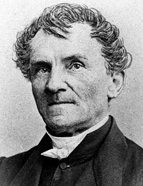

Comparing the translations of the 1842-43 (partial) editions with that of 1893-1899 (complete) of Heinrich Schaefer’s work, the discrepancies do not appear to be as striking as has been claimed. It seems to be mainly a matter of different translation concepts: one free and popular, from French; the other faithful and scientific, from German. The cultural background of the two translators, as well as the editorial care taken in printing and scheduling the two editions, explain these differences. The Portuguese edition of the late 19th century, so highly praised and generally regarded as a faithful reproduction of the original German edition, does not ultimately achieve this laudable aim. Thus, looking through the various volumes of this edition, which runs under the title History of Portugal from the foundation of the monarchy to the revolution of 1820. Faithfully, fully and directly translated by F. de Assis Lopes. Continued, under the same plan, to the present day by J. Pereira de Sampaio Bruno, it is clear that Schaefer’s original prefaces, instead of being reproduced – as would be logical and natural – at the beginning of each Portuguese volume, are referred to the final volume of the edition. Furthermore, there is no direct correspondence between the volumes of the original German edition and what would be expected of a critical and definitive Portuguese edition. We thus sometimes have an unorthodox division of material that has no direct relationship with specific historical periods and is difficult to understand: vols. I, 1893, 1095-1383; II, 1893, 1383-1495; III, 1895, 1481/95-1580 (including Portuguese India, 1528/1538); IV, 1898, 1580-1750 (including the remaining analysis of Portuguese India, from 1528/1538 to 1580); V, 1899, 1750-1820. This last volume includes, in a single block, Schaefer’s prefaces to the four volumes of the original edition, on pp. 449-67. It is also regrettable that volumes VI and VII, published until 1926 by Casa Editorial A. Figueirinhas, were used for a new continuation of Schaefer’s original work, now extended to 1910, with the author, José Agostinho, resorting to integralist readings of the Portuguese past. This was not an uncommon practice at the time.
This work is financed by national funds through FCT - Foundation for Science and Technology, I.P, in the scope of the projects UIDB/04311/2020 and UIDP/04311/2020.
